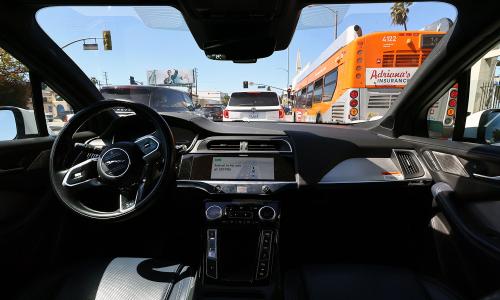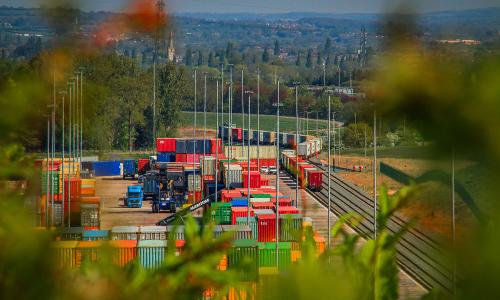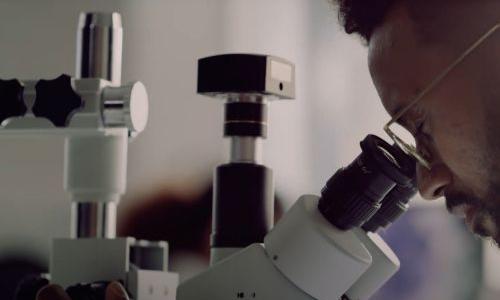Autonomous Vehicles (AVs) are cars or trucks in which human drivers are not required to take control to safely operate the vehicle. Also called self-driving or “driverless” cars, they combine sensors and software to control, navigate, and drive the vehicle.
Currently, a handful of autonomous ride-hailing services like Waymo are operating “driverless vehicles” (also called, “robotaxis”) in about a half-dozen cities. There are also some companies that operate autonomous tractor-trailers, but given safety concerns and the nascence of the technology, those vehicles are operating on limited routes along public highways and roads. No manufacturer has made a fully automated personal vehicle. As the safety and technology behind AVs improves, they’ll likely become more commonplace.
While current self-driving vehicles are replicating existing services (like taxis and ride-hailing) , they could radically transform our transportation system (and by extension, our economy and society).
How they work
Various self-driving technologies have been developed by Google (Waymo), Uber, Tesla, Volkswagen, and other major automakers, researchers, and technology companies. They build on decades of advanced driver-assistance systems development, such as cruise control, collision warnings, and lane assist.
While design details vary, most self-driving systems create and maintain an internal map of their surroundings, based on a wide array of sensors, like radar. Waymo’s vehicles use cameras, sensors, Light Detection and Ranging (lidar), radar, and highly-detailed maps to get around. AI is used to continue to improve their performance.
Software then processes those inputs, plots a path, and sends instructions to the vehicle’s “actuators,” which control acceleration, braking, and steering. Hard-coded rules, obstacle avoidance algorithms, predictive modeling, and object detection helps the software follow traffic rules and navigate obstacles. Self-driving cars can also be remotely operated or directed by human intervention using teleoperation to resolve unusual or ambiguous situations. Self-driving cars could also potentially communicate with other vehicles and/or infrastructure, such as next generation traffic lights if the technology is widely deployed. Most vehicles in operation today do not currently rely on this capability.
Impacts
The costs and benefits of self-driving cars are still largely hypothetical. More information is needed to fully assess how they’ll impact drivers, the economy, equity, and environmental and public health.
Safety is an overarching concern. Around forty thousand people die in motor vehicle crashes every year in the United States. Self-driving vehicles could increase the miles driven on our roadways —coming with increased safety risks — or, they could improve safety if software proves to be less error-prone than humans. Regardless of what the future brings, we need regulations in place to ensure companies operate responsibly and prudently as testing occurs on public roadways.
Equity is another major consideration. Current self-driving vehicles are developed in private sector applications with no requirements or regulations to serve people that need them most. In addition, there are inequities potentially baked into the technology. For example, studies have shown that automated vehicles are less able to detect people of color and children. Widespread adoption of autonomous vehicles could displace millions of people employed as drivers, negatively impact public transportation funding, and perpetuate the current transportation system’s injustices.
Environmental impacts are a serious concern, and a major uncertainty. Accessible, affordable, and convenient AVs could increase the total number of miles driven each year. Increasing vehicle usage will cause emissions to increase. If these vehicles are powered by gasoline, then transportation-related climate emissions could skyrocket. However, if the vehicles are electrified—and paired with a clean electricity grid—then the increase in transportation emissions could be more modest. If electric AVs replace miles that would be otherwise travelled using conventional gasoline vehicles, it is possible that emissions would decrease.
Emissions could drop compared to our current system, to the extent that electrified AVs enable more shared rides or greater use of public transit for parts of trips.
Seven Principles for AVs
The Union of Concerned Scientists has developed a set of seven principles to help guide how policymakers, companies, and other stakeholders approach this transformative technology. The principles are intended to help maximize the benefits of self-driving cars—and minimize the risks.
Principle #1: Safer transportation
Self-driving cars could reduce vehicle-related fatalities, as machines may make fewer errors than humans—but it’s not a guaranteed outcome. Policy must improve the safety of all road users, whether they are driving, walking, or biking.
Principle #2: Cleaner vehicles
By making transportation more convenient, self-driving vehicles could increase the number of miles that people travel, creating more vehicle pollution. To avoid this outcome, policy must ensure that self-driving technology is paired with clean, low-carbon vehicles, such as plug-in electrics. Policy must also incentivize ride hailing services like Uber or Lyft to maximize the number of passengers for each trip and minimize trips with no passengers.
Principle #3: Integrated transit
AVs will make transportation easier for many—but they shouldn’t replace mass transit options like buses or subways. Instead, AVs should connect transit hubs, provide public transit services to communities not currently served, and generally be used to improve public transportation.
Principle #4: Improved access
In its current form, the US transportation system fails to serve all communities equally, with disadvantages arising based on income, age, race, disability, and geography. Policy should ensure that the widespread adoption of self-driving cars doesn’t perpetuate or worsen existing inequalities and instead gives all people access to clean, affordable transportation options.
Principle #5: Just transition
Self-driving technology will create jobs for some and reduce employment opportunities for others, especially in the trucking and ride-hailing industries. Policy should support career pathways and transitions for affected individuals, and ensure that new jobs are made available to underrepresented populations.
Principle #6: Public accountability and data security
Whether self-driving vehicles improve public health, decrease traffic congestion, or reduce climate change will depend on informed, science-based policy. This will require a robust research agenda and accessible data on the performance and operation of self-driving vehicles. Policy must facilitate open data-sharing, while ensuring that appropriate privacy and cybersecurity protections are in place.
Principle #7: Livable communities
Autonomous vehicles could exacerbate sprawl, congestion, and pollution— or they could lead to more shared rides and fewer cars, freeing up public space. Policy should prioritize the needs of the whole community, not just individual vehicles.




